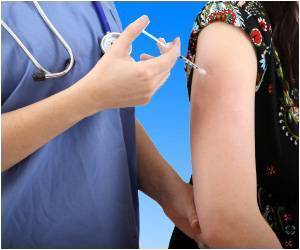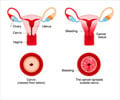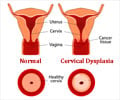Cervical cancer is preventable, and this January, let’s unite to educate, vaccinate, and screen for a healthier tomorrow.
- HPV vaccination can drastically reduce cervical cancer risk
- Regular screenings like Pap smears detect early changes in the cervix
- Access to healthcare and awareness campaigns are critical to prevention
IARC marks Cervical Cancer Awareness Month 2025
Go to source).
HPV vaccination can prevent up to 90% of cervical cancer cases! #hpvvaccine #cervicalcancerprevention’
Understanding Cervical Cancer and How it Spreads
Cervical cancer affects the cervical cells which is the lower part of uterus that is attached to the vagina. This is due to continued outbreaks worldwide of the Human Papillomavirus (HPV) that account for nearly 90% of cases. Cervical cancer mortality among woman age groups 30-69 in India accounts to approximately 17 % of all cancer deaths in women and this calls for prevention.HPV is shed through skin to skin contact; this is most likely to occur during sexual intercourse. Although the disease is preventable, a number of women remain in the dark concerning such correct measures such as HPV vaccines, screening tests and lifestyle modification.
Cervical Cancer Awareness Month-2025 Theme
The 2025 theme focuses on collective responsibility to prevent cervical cancer. It sets an ambitious target: ensuring that 90% of girls receive the HPV vaccine by age 15. Vaccination significantly reduces the risk of cervical cancer, making it a cornerstone of prevention efforts.Cervical Cancer Awareness Campaigns
During Cervical Cancer Awareness Month, campaigns aim to educate women on:- Regular Screenings: Pap smears and HPV testing can detect precancerous changes in the cervix and should be treated while still in the early stages.
- Lifestyle Choices: The following behaviors can also help reduce the risk of getting HPV: Avoid unprotected sex, and smoking, and follow a healthy diet.
- Understanding Symptoms: They include abnormal bleeding, pelvic pain and unusual discharge and should be sought for a medical check-up.
Improving Healthcare Access for Cancer Prevention
The situation in India is slightly different as cervical cancer prevention requires significant improvements in tackling inequality in accessing healthcare. Rural and underprivileged women have no resources to get a vaccination done or take a screening test. Addressing these gaps requires:- Strengthening Infrastructure: Ensuring that the department store format is extended to cater to screening and vaccinations for people in rural regions.
- Outreach Programs: Organizing population HPV education campaigns to encourage women to come for the vaccines and create awareness on myths surrounding the vaccines.
- Government Initiatives: Support vaccination costs and make vaccines accessible in all outpatient clinics and walk-in clinics.
Global Goals for Elimination
The World Health Organization (WHO) has set ambitious targets to eliminate cervical cancer by 2030:- 90% of girls were fully vaccinated against HPV by age 15.
- 70% of women were screened with high performance tests by ages 35 and 45.
- 90% of women with cervical disease were treated effectively.
Cervical cancer prevention depends on the degree of its early detection, and this starts with knowledge. Here are the essential steps:
- HPV Vaccination: This is the most protective intervention for girls between the ages of 9 and 14 years.
- Regular Screening: Our target group of women in the age range of 25–65 years, should have Pap smears and HPV tests as necessary.
- Lifestyle Modifications: Along with the above, it’s important not to smoke, follow a proper diet, and avoid unsafe practices in sexual matters.
Together we can build a world where cervical cancer is not a prominent killer of women with cancer. The time for action is now – let’s educate, vaccinate, screen for a healthier tomorrow.
Reference:
- IARC marks Cervical Cancer Awareness Month 2025 - (https://www.iarc.who.int/news-events/iarc-marks-cervical-cancer-awareness-month-2025/)
Source-Medindia
















